11/02: The First Hundred Miles of the Trace
Category: General
Posted by: The Agnew Family
We said we were going to poke along the trace and see everything there was to see and we did --- left just after 9am and got to the hotel in Canton about 6:30 pm. It was a good day, we saw lots of interesting things and talked to some interesting people. The photos show some of the highlights of today.
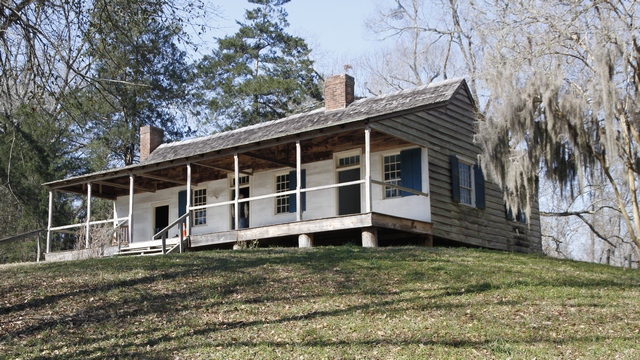
Built around 1780 this is one of the oldest structures in Mississippi. It functioned as both a working plantation and as an inn, where travelers on the Natchez Trace could rest for the night and have a meal for 25 cents. The National Park volunteer was very knowledgeable about this home. The author Nevada Barr used the Natchez Trace Parkway as the setting for two of her books. In one of her books the murder victim was found in this house. The volunteer told me that Nevada Barr had been a seasonal ranger on the trace.
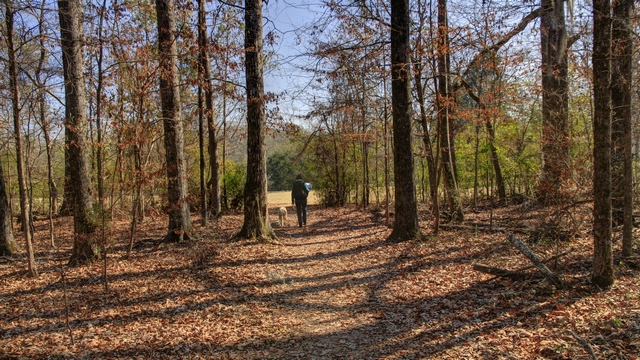
It looks a bit like fall but spring is definitively coming. Trees are starting to bud and there were some spring flowers along the road.
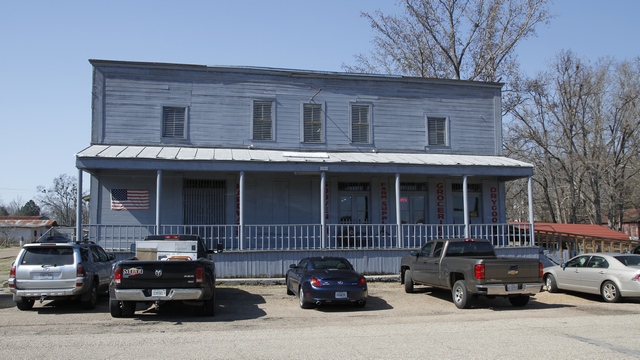
We were told to stop for lunch at the Old Country Store Restaurant in Lorman about a five minute drive off the trace. It was good advise. The lunch buffet included good fried chicken, excellent ribs, fantastic mustard greens, mac and cheese, dressing, salad, corn on the cob and much more. Desert was fruit cobbler --- Ed and I split a half and half cobbler with ice cream --- half peach and half black berry. The owner Mr. D came out to say hello to everyone eating in the restaurant then proceeded to sing a couple of songs --- one of them about his Grand Mama's cornbread.
About 15 miles off the trace is the town of Rodney, or should I say what was the town of Rodney. The town was founded in 1828 and in the 19th century, it was only three votes away from becoming the capital of the Mississippi Territory. It's population declined to nearly zero after the Mississippi river changed course. Today, the town is used mainly as a hunting camp.
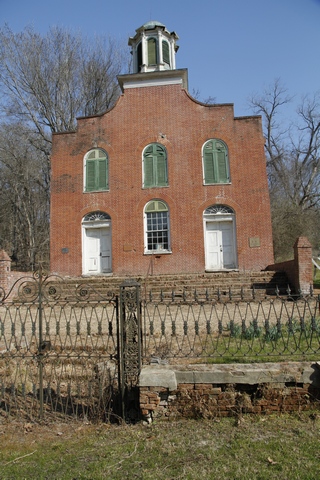
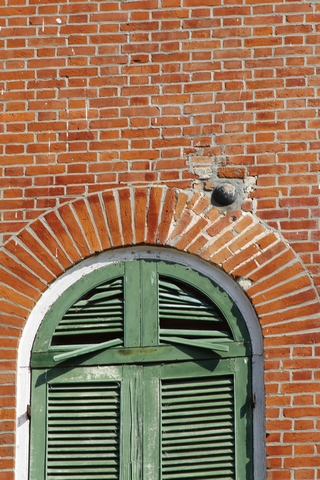
During the civil war, Union troops fired cannons at the town. One of the cannon balls lodged itself in the front wall of the Presbyterian Church. The cannon ball in the photo was placed in the wall many years ago after the original one had fallen out.
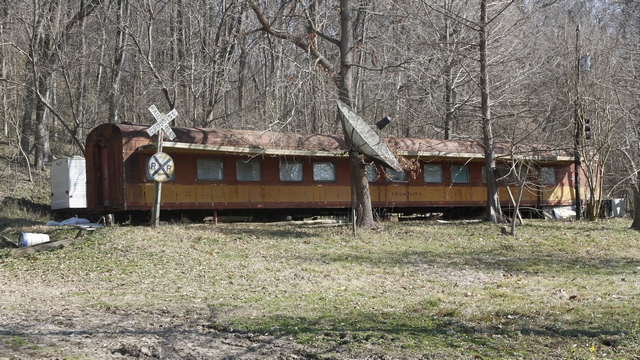
This old railway car is being used as a cabin by a hunter.
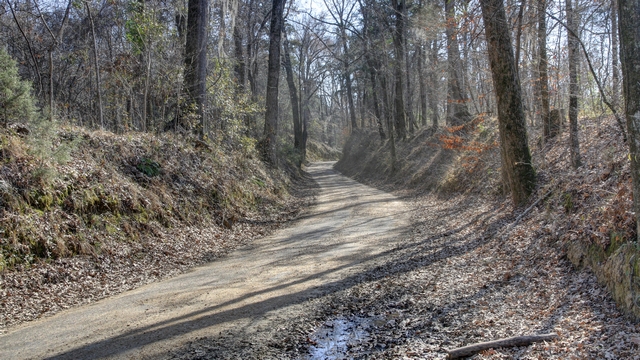
We took an alternate route back to the trace that took us down this dirt road. This is one of the many sunken roads in the area. The dirt compacted over time as by road traffic while the land around it stayed at it's original height. We were surprised when we drove into the back end of Alcorn State University --- pretty campus.
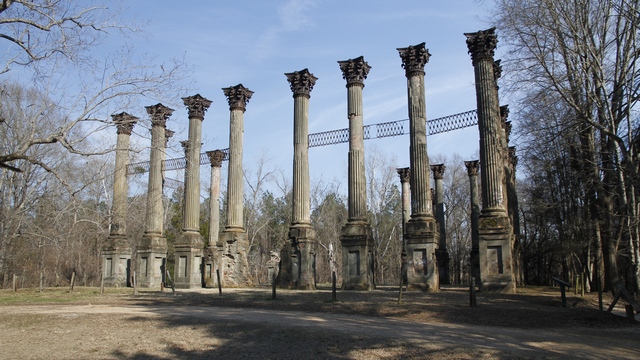
Another famous landmark just off the trace is the Windsor Ruins. Built in 1859-61 by Smith Daniell who only lived in the large mansion for a few weeks before he died. The Windsor plantation once sprawled over 2,600 acres. Legend says that from a roof observatory, Mark Twain watched the Mississippi River in the distance. The house survived the civil war but during a house party of February 17, 1890 a guest left a lighted cigar on the upper balcony and Windsor burned to the ground. Everything was destroyed except 23 of the columns, balustrades and iron stairs. The stairs are in a building on the Alcorn University campus.
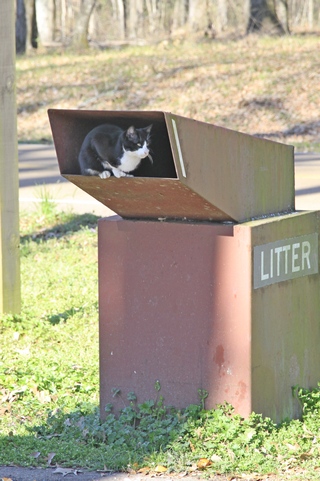 )
)
Stopped to read a sign and noticed this little guy.

Built around 1780 this is one of the oldest structures in Mississippi. It functioned as both a working plantation and as an inn, where travelers on the Natchez Trace could rest for the night and have a meal for 25 cents. The National Park volunteer was very knowledgeable about this home. The author Nevada Barr used the Natchez Trace Parkway as the setting for two of her books. In one of her books the murder victim was found in this house. The volunteer told me that Nevada Barr had been a seasonal ranger on the trace.

It looks a bit like fall but spring is definitively coming. Trees are starting to bud and there were some spring flowers along the road.

We were told to stop for lunch at the Old Country Store Restaurant in Lorman about a five minute drive off the trace. It was good advise. The lunch buffet included good fried chicken, excellent ribs, fantastic mustard greens, mac and cheese, dressing, salad, corn on the cob and much more. Desert was fruit cobbler --- Ed and I split a half and half cobbler with ice cream --- half peach and half black berry. The owner Mr. D came out to say hello to everyone eating in the restaurant then proceeded to sing a couple of songs --- one of them about his Grand Mama's cornbread.
About 15 miles off the trace is the town of Rodney, or should I say what was the town of Rodney. The town was founded in 1828 and in the 19th century, it was only three votes away from becoming the capital of the Mississippi Territory. It's population declined to nearly zero after the Mississippi river changed course. Today, the town is used mainly as a hunting camp.


During the civil war, Union troops fired cannons at the town. One of the cannon balls lodged itself in the front wall of the Presbyterian Church. The cannon ball in the photo was placed in the wall many years ago after the original one had fallen out.

This old railway car is being used as a cabin by a hunter.

We took an alternate route back to the trace that took us down this dirt road. This is one of the many sunken roads in the area. The dirt compacted over time as by road traffic while the land around it stayed at it's original height. We were surprised when we drove into the back end of Alcorn State University --- pretty campus.

Another famous landmark just off the trace is the Windsor Ruins. Built in 1859-61 by Smith Daniell who only lived in the large mansion for a few weeks before he died. The Windsor plantation once sprawled over 2,600 acres. Legend says that from a roof observatory, Mark Twain watched the Mississippi River in the distance. The house survived the civil war but during a house party of February 17, 1890 a guest left a lighted cigar on the upper balcony and Windsor burned to the ground. Everything was destroyed except 23 of the columns, balustrades and iron stairs. The stairs are in a building on the Alcorn University campus.
 )
)Stopped to read a sign and noticed this little guy.